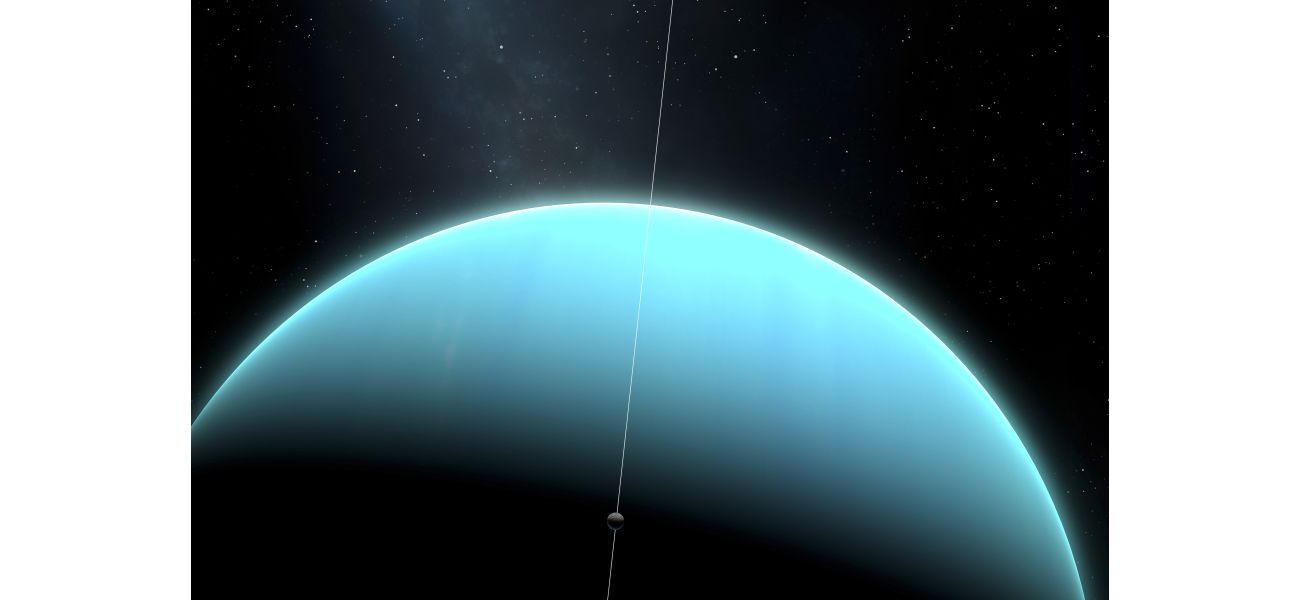Experts have unlocked secrets of Uranus, revealing wind plays a crucial role.
Uranus requires thorough examination.
November 12th 2024.

Uranus, the seventh planet from the Sun and the third largest in our solar system, has been a mystery to scientists for years. Despite being extensively studied by astronomers, new research now suggests that our understanding of this ice giant may have been wrong all along.
For the past four decades, we have believed that Uranus, with its five biggest moons and iconic rings, was a barren and lifeless world. This assumption was based on the limited data gathered by NASA's Voyager 2 spacecraft during its flyby in 1986. However, recent findings have challenged this notion and opened up the possibility that there may be more to this distant planet than we thought.
One of the most surprising discoveries made by Voyager 2 was that Uranus is tilted on its side, unlike any other planet in our solar system. This peculiar orientation, along with the lack of geological activity, led scientists to believe that Uranus and its moons were inactive and incapable of supporting life. However, a new study published in the journal Nature Astronomy suggests that this may not be the case.
According to the research, Voyager 2's findings can be explained by a rare and powerful solar wind that the spacecraft encountered during its flyby. This solar wind may have distorted Uranus's magnetic field and pushed away any particles that could have indicated the presence of oceans or geological activity. In other words, Uranus may not be the barren and sterile world we once thought it was.
The possibility of oceans and geological activity on Uranus and its moons has sparked new interest in studying this distant planet. With advancements in technology, scientists are now considering a return visit to Uranus in order to gather more data and potentially uncover more secrets about this mysterious world. In fact, NASA has already announced plans for a new mission, the Uranus Orbiter and Probe, which is set to launch in 10 years.
Until then, we can only imagine what a day on Uranus might look like. With its 13 faint rings and 28 small moons, the possibilities are endless. And who knows, maybe one day we will find out that these far out icy worlds are not as lifeless as we once thought. Perhaps they could even be home to some form of extraterrestrial life. Only time and further exploration will tell.
For the past four decades, we have believed that Uranus, with its five biggest moons and iconic rings, was a barren and lifeless world. This assumption was based on the limited data gathered by NASA's Voyager 2 spacecraft during its flyby in 1986. However, recent findings have challenged this notion and opened up the possibility that there may be more to this distant planet than we thought.
One of the most surprising discoveries made by Voyager 2 was that Uranus is tilted on its side, unlike any other planet in our solar system. This peculiar orientation, along with the lack of geological activity, led scientists to believe that Uranus and its moons were inactive and incapable of supporting life. However, a new study published in the journal Nature Astronomy suggests that this may not be the case.
According to the research, Voyager 2's findings can be explained by a rare and powerful solar wind that the spacecraft encountered during its flyby. This solar wind may have distorted Uranus's magnetic field and pushed away any particles that could have indicated the presence of oceans or geological activity. In other words, Uranus may not be the barren and sterile world we once thought it was.
The possibility of oceans and geological activity on Uranus and its moons has sparked new interest in studying this distant planet. With advancements in technology, scientists are now considering a return visit to Uranus in order to gather more data and potentially uncover more secrets about this mysterious world. In fact, NASA has already announced plans for a new mission, the Uranus Orbiter and Probe, which is set to launch in 10 years.
Until then, we can only imagine what a day on Uranus might look like. With its 13 faint rings and 28 small moons, the possibilities are endless. And who knows, maybe one day we will find out that these far out icy worlds are not as lifeless as we once thought. Perhaps they could even be home to some form of extraterrestrial life. Only time and further exploration will tell.
[This article has been trending online recently and has been generated with AI. Your feed is customized.]
[Generative AI is experimental.]
0
0
Submit Comment





